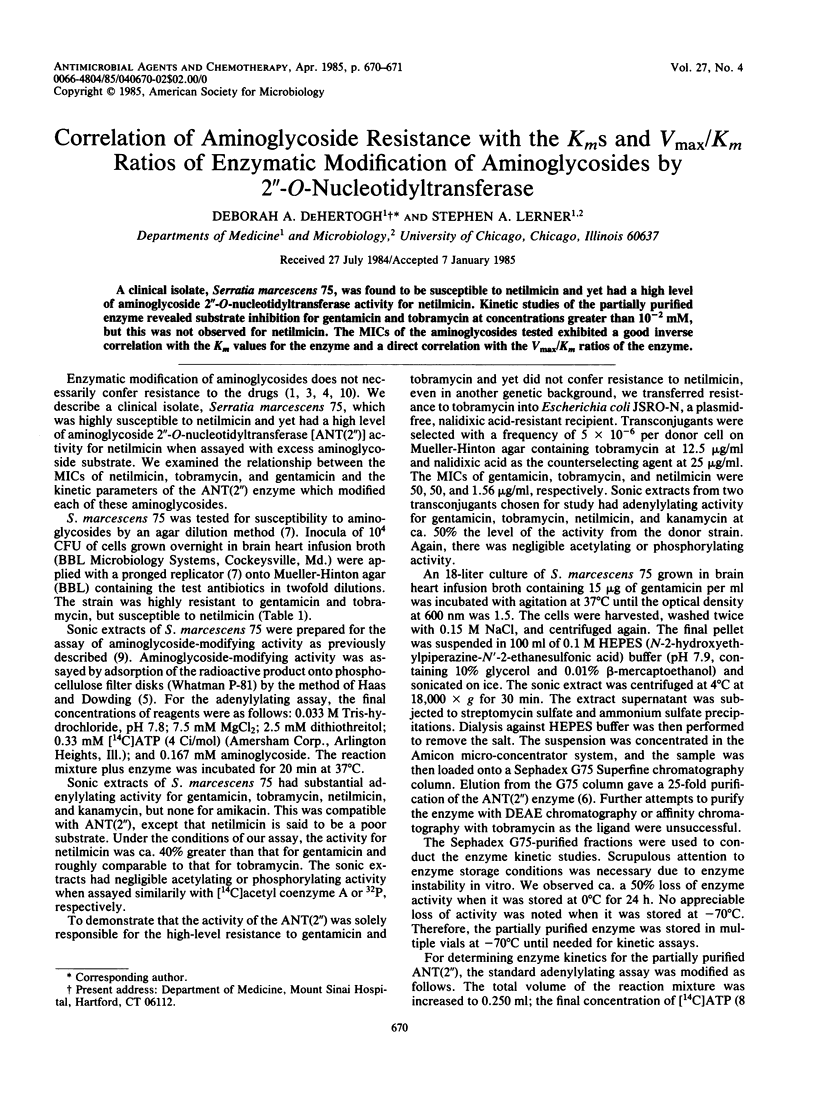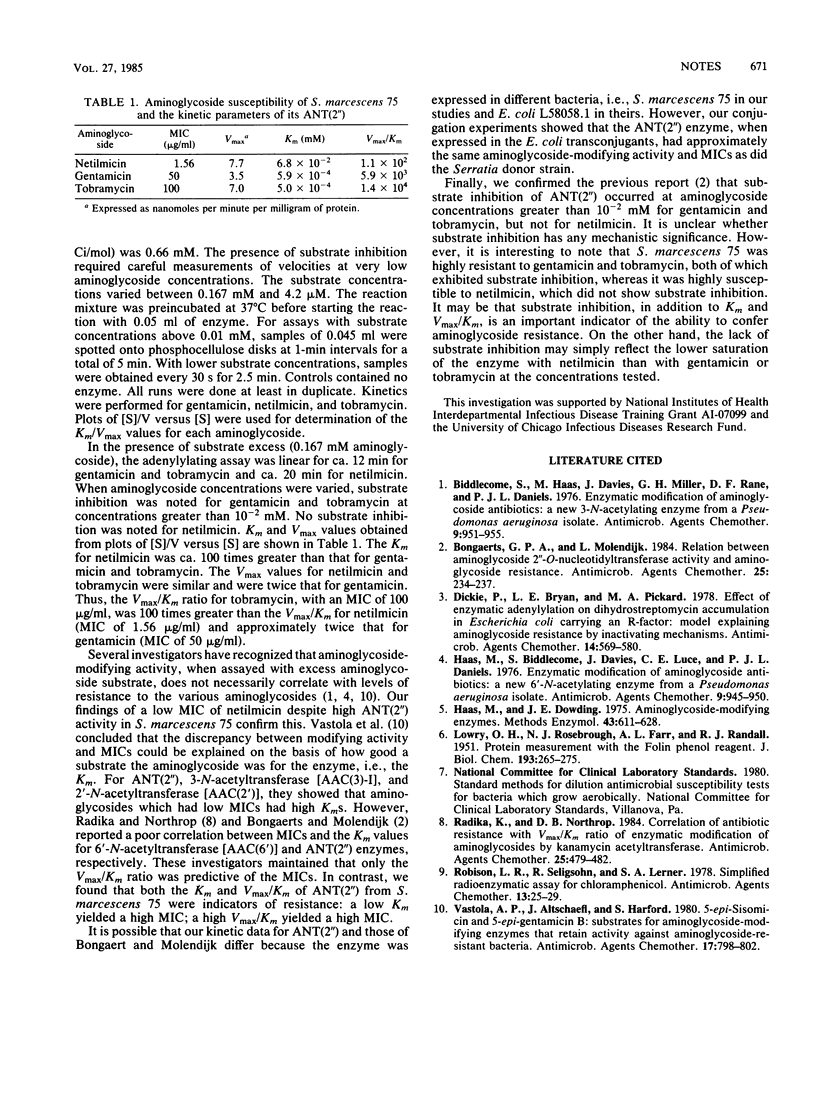Abstract
A clinical isolate, Serratia marcescens 75, was found to be susceptible to netilmicin and yet had a high level of aminoglycoside 2''-O-nucleotidyltransferase activity for netilmicin. Kinetic studies of the partially purified enzyme revealed substrate inhibition for gentamicin and tobramycin at concentrations greater than 10(-2) mM, but this was not observed for netilmicin. The MICs of the aminoglycosides tested exhibited a good inverse correlation with the Km values for the enzyme and a direct correlation with the Vmax/Km ratios of the enzyme.
Full text
PDF

Selected References
These references are in PubMed. This may not be the complete list of references from this article.
- Biddlecome S., Haas M., Davies J., Miller G. H., Rane D. F., Daniels P. J. Enzymatic modification of aminoglycoside antibiotics: a new 3-N-acetylating enzyme from a Pseudomonas aeruginosa isolate. Antimicrob Agents Chemother. 1976 Jun;9(6):951–955. doi: 10.1128/aac.9.6.951. [DOI] [PMC free article] [PubMed] [Google Scholar]
- Bongaerts G. P., Molendijk L. Relation between aminoglycoside 2"-O-nucleotidyltransferase activity and aminoglycoside resistance. Antimicrob Agents Chemother. 1984 Feb;25(2):234–237. doi: 10.1128/aac.25.2.234. [DOI] [PMC free article] [PubMed] [Google Scholar]
- Dickie P., Bryan L. E., Pickard M. A. Effect of enzymatic adenylylation on dihydrostreptomycin accumulation in Escherichia coli carrying an R-factor: model explaining aminoglycoside resistance by inactivating mechanisms. Antimicrob Agents Chemother. 1978 Oct;14(4):569–580. doi: 10.1128/aac.14.4.569. [DOI] [PMC free article] [PubMed] [Google Scholar]
- Haas M. J., Dowding J. E. Aminoglycoside-modifying enzymes. Methods Enzymol. 1975;43:611–628. doi: 10.1016/0076-6879(75)43124-x. [DOI] [PubMed] [Google Scholar]
- Haas M., Biddlecome S., Davies J., Luce C. E., Daniels P. J. Enzymatic modification of aminoglycoside antibiotics: a new 6'-N-acetylating enzyme from a Pseudomonas aeruginosa isolate. Antimicrob Agents Chemother. 1976 Jun;9(6):945–950. doi: 10.1128/aac.9.6.945. [DOI] [PMC free article] [PubMed] [Google Scholar]
- LOWRY O. H., ROSEBROUGH N. J., FARR A. L., RANDALL R. J. Protein measurement with the Folin phenol reagent. J Biol Chem. 1951 Nov;193(1):265–275. [PubMed] [Google Scholar]
- Radika K., Northrop D. B. Correlation of antibiotic resistance with Vmax/Km ratio of enzymatic modification of aminoglycosides by kanamycin acetyltransferase. Antimicrob Agents Chemother. 1984 Apr;25(4):479–482. doi: 10.1128/aac.25.4.479. [DOI] [PMC free article] [PubMed] [Google Scholar]
- Robison L. R., Seligsohn R., Lerner S. A. Simplified radioenzymatic assay for chloramphenicol. Antimicrob Agents Chemother. 1978 Jan;13(1):25–29. doi: 10.1128/aac.13.1.25. [DOI] [PMC free article] [PubMed] [Google Scholar]
- Vastola A. P., Altschaefl J., Harford S. 5-epi-Sisomicin and 5-epi-Gentamicin B: substrates for aminoglycoside-modifying enzymes that retain activity against aminoglycoside-resistant bacteria. Antimicrob Agents Chemother. 1980 May;17(5):798–802. doi: 10.1128/aac.17.5.798. [DOI] [PMC free article] [PubMed] [Google Scholar]


